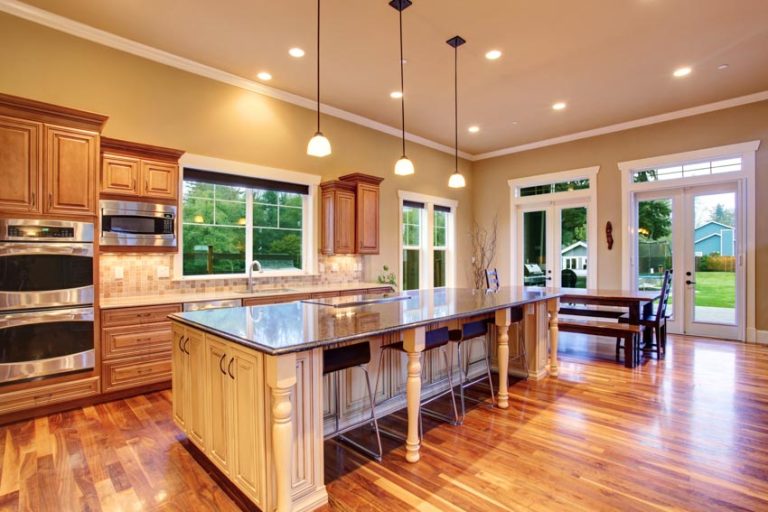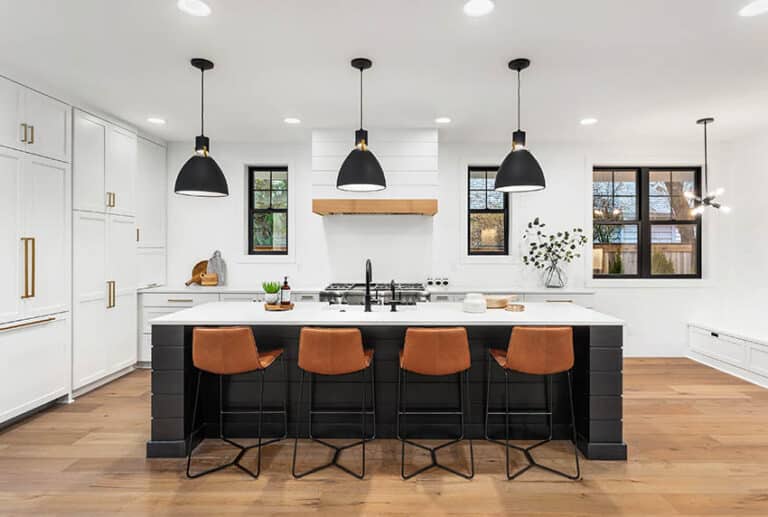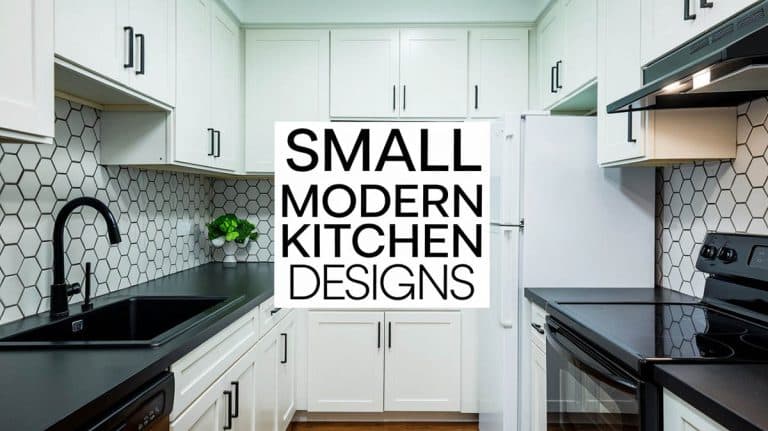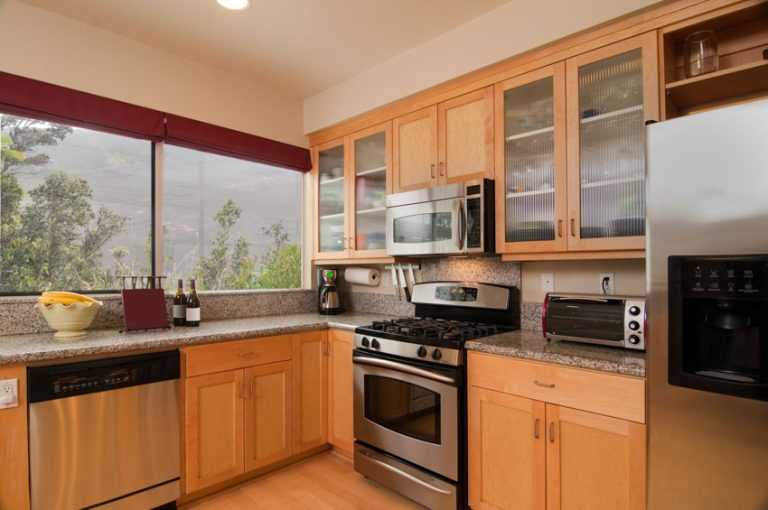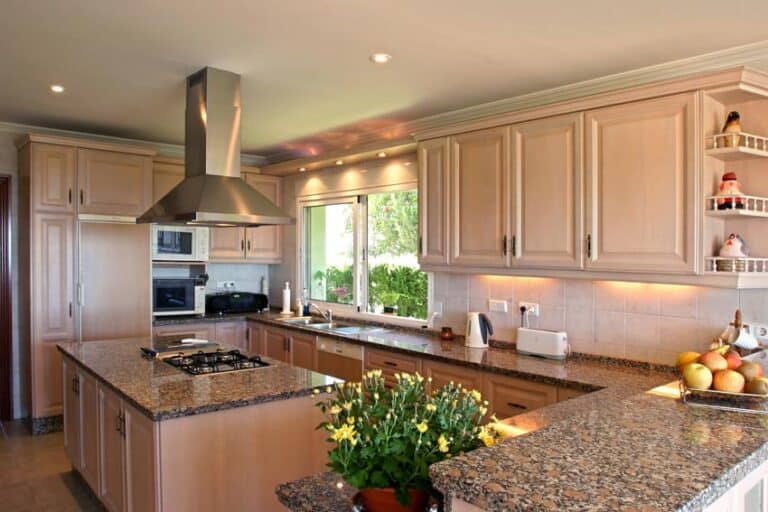What To Know About Tin Ceiling Kitchen Designs: Ideas To Use
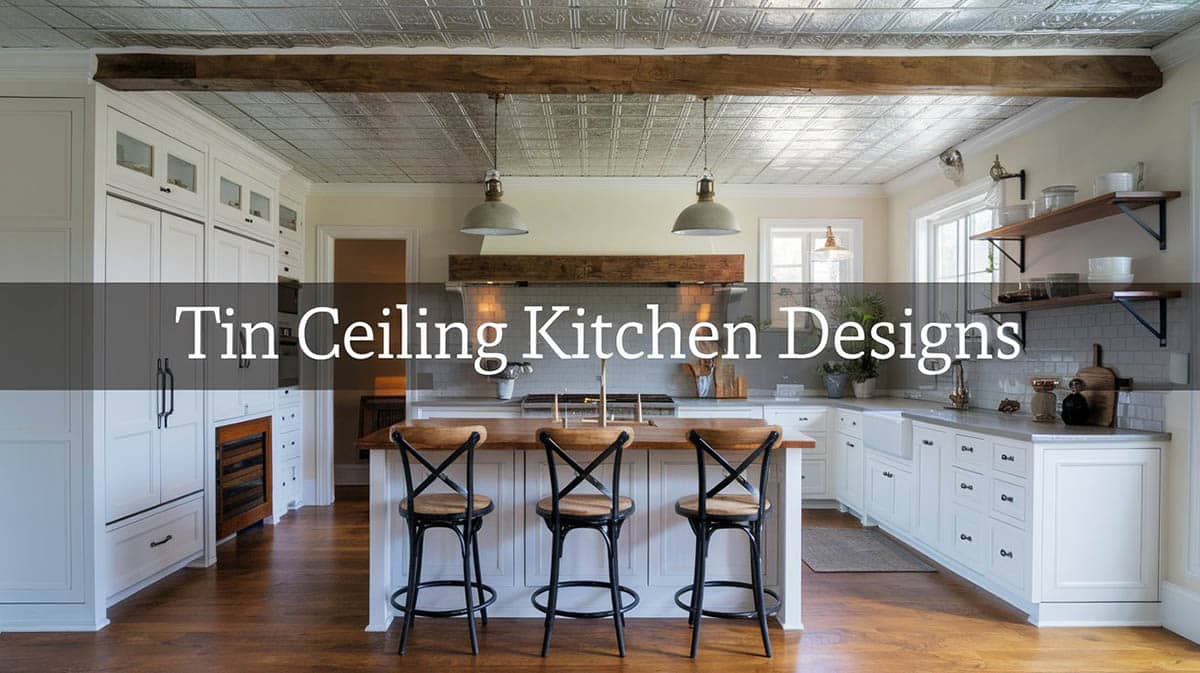
Tin ceilings were a popular design element in Victorian buildings in North America from the 19th up to the early 20th century when plated steel became readily available in the USA. This architectural element is made from a piece of tin with embossed/pressed patterns. Tin ceilings can be installed in any area of your home; just ensure the roof is properly insulated, as metal conducts heat easily and might affect your HVAC and energy consumption
Kitchen Tin Ceiling Tiles
Treat a tin ceiling like the kitchen’s fifth wall; the pattern you choose needs to harmonize with the scale of the room and the cabinetry below. Smaller kitchens benefit from simple, tight-repeat motifs (think diamonds or vines) that read as subtle texture rather than busy ornament, while generous island kitchens can handle grand pressed-floral or medallion panels that echo a statement light fixture. Install decorative filler strips or crown cell trim at the perimeter so you don’t end up cutting ornate panels in awkward places. Because tin reflects both light and sound, combine it with soft finishes—wood floors, upholstered bar stools, woven shades—to keep acoustics and glare comfortable, and always specify a fire-rated backer board above cooktops before nailing panels into furring strips.
Common materials used for tin ceiling kitchen ideas are:
- Steel – most common; needs a clear coat finish
- Aluminum – lightest option; needs a clear coat finish
- Stainless Steel – no need for coating
- Copper – if left without coating, it can develop a natural patina
- Non-Metal Alternatives:
- PVC – super light but unsuitable for high-heat areas
- Mineral Fiber – made from recycled materials & can be painted to resemble metal
The default color is silver/chrome, but they can also be bought in other colors like copper, gunmetal gray, gold, rose gold, etc. You can also purchase these tiles pre-painted or even brass-plated. You can choose numerous patterns from that area that are available for purchase. You can go for the simpler options, but you can find classic styles in the market if you’d like to match them with the current motifs of your kitchen.
Modern tin ceilings come in thinner metal sheets (around 1/100 inch, 30-gauge steel) and are usually easier to install. Nowadays, tin ceilings cost around $2 per square foot for basic designs up to $10~$20 per square foot for more ornate designs. The total cost will depend on your material specification, finish, and installation cost in your area.
Tin Ceiling Designs
Here are some great tin ceiling design applications you can get inspiration from:
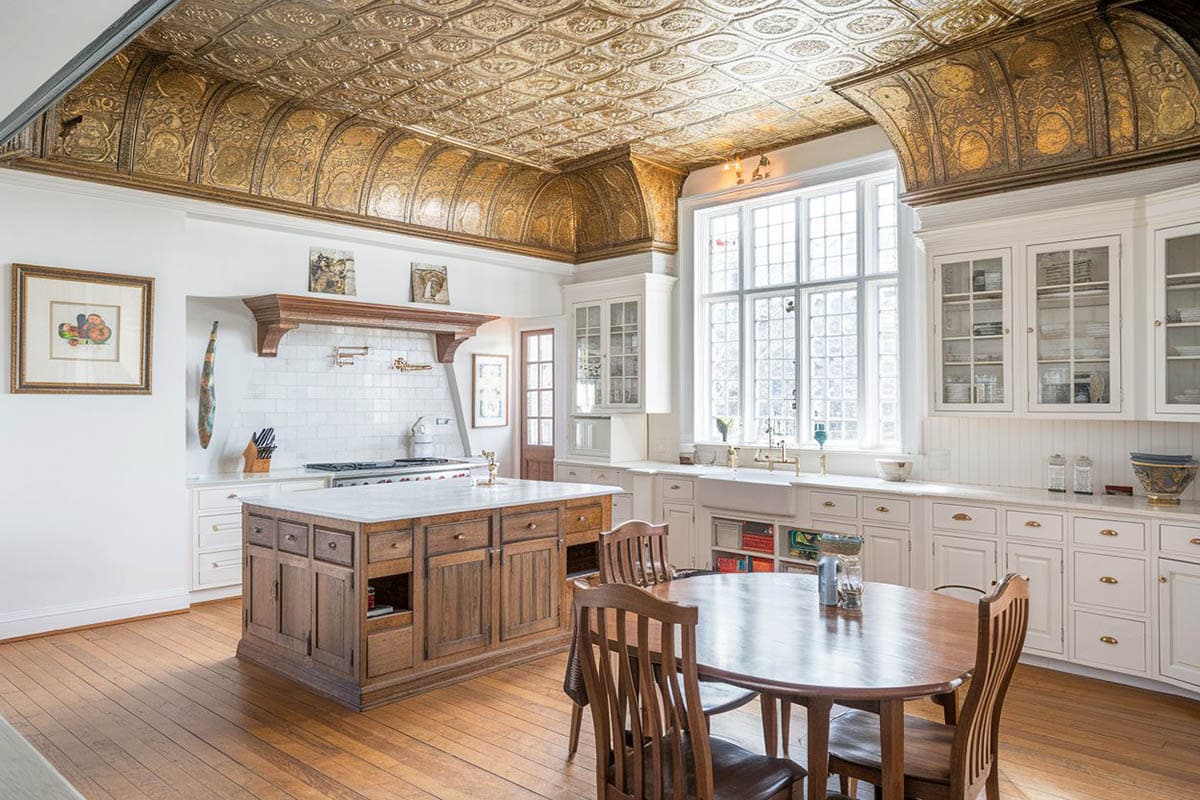
For this classic French style kitchen, they really went all-out with their gold tin ceiling, as it covers the whole overhead area. It uses multiple combinations of patterns, borders, and moldings to create this Victorian-style look. Because the main layout has a simple white and walnut color scheme, and the gold finish is not too reflective, it does not feel too overwhelming or out of place.
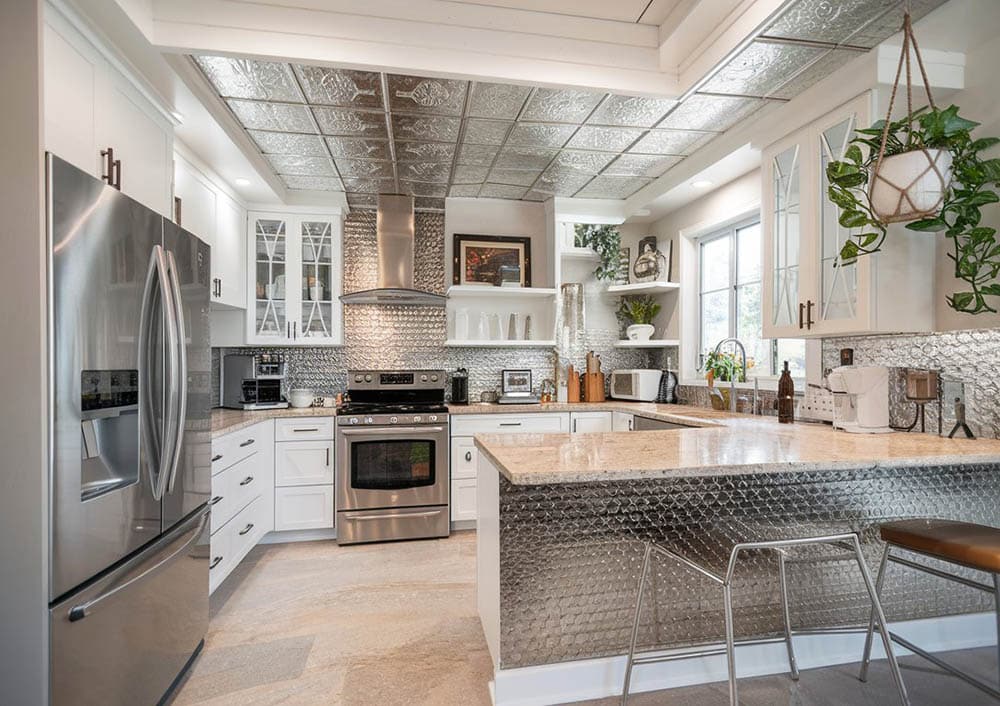
This traditional kitchen design utilizes tin for its tray ceiling, peninsula, and walls. Featuring a decorative motif, the siding gives this space a classical look that blends well with the white cabinetry and light-colored bamboo flooring. These materials work well with traditional designs to bring in the feel of old-world charm.
White Tin
Painting tin ceiling panels crisp white is the quickest way to bounce light around a kitchen, making it feel taller and brighter and is especially valuable when wall cabinets run to the ceiling. Use a high-build bonding primer first; it fills micro-pits in the metal, preventing drip lines and ensuring the embossed pattern stays sharp. Semi-gloss or satin topcoats show off shadows without looking plasticky. Pair white tin with light countertops, mirrored or glass-front uppers, and polished-nickel hardware for a seamless, high-reflectance palette, or let it ground bolder choices like navy cabinets and matte-black fixtures by giving the eye a clean “ceiling reset.”

White tin coffered ceilings are very low-key and elegant. In this example, the white tiles add a nice texture to the overhead design. Because the tiles used are white, it looks bright and refreshing, and definitely upgrades the over-all appeal of the design.
Farmhouse
For a modern-farmhouse kitchen, lean into the history of tin by choosing classic repeating squares or simple colonial florals and finishing them in a warm eggshell white or soft putty gray. Frame the edges with reclaimed barn-beam trim to bridge ceiling and shiplap walls, then repeat the tin motif on a small range-hood band or the back of an open-shelf niche to knit the elements together. Keeping appliances in enameled white or slate rather than stainless helps the ceiling stay the hero, while vintage schoolhouse pendants with milk-glass shades echo the gentle nostalgia of pressed metal.

Farmhouse-style kitchens would also benefit from adding tin metal accents. The rough texture of the tiles gives an extra rustic grit to the space. In this layout, because the cabinets are all clean white topped with a light Ash butcher’s block countertop, the accent ceiling used at the center of the floor plan adds just the right amount of accent.
Corrugated Tin
Corrugated panels bring a rugged, industrial edge that’s perfect for loft kitchens, bar zones, or casual cabinetry. Because the profile is deeper than pressed tiles, mount corrugated tin on 1×2 sleepers to create a level grid and allow room for recessed wiring. To soften the “shed” vibe, run the corrugation across the room rather than down its length, then break it up with exposed wood beams stained a warm walnut. Matte clear-coat the panels if you love their raw galvanized finish, or acid-wash and seal them for a smoky graphite tone that disguises fingerprints and ties in with dark steel stools and iron shelving.
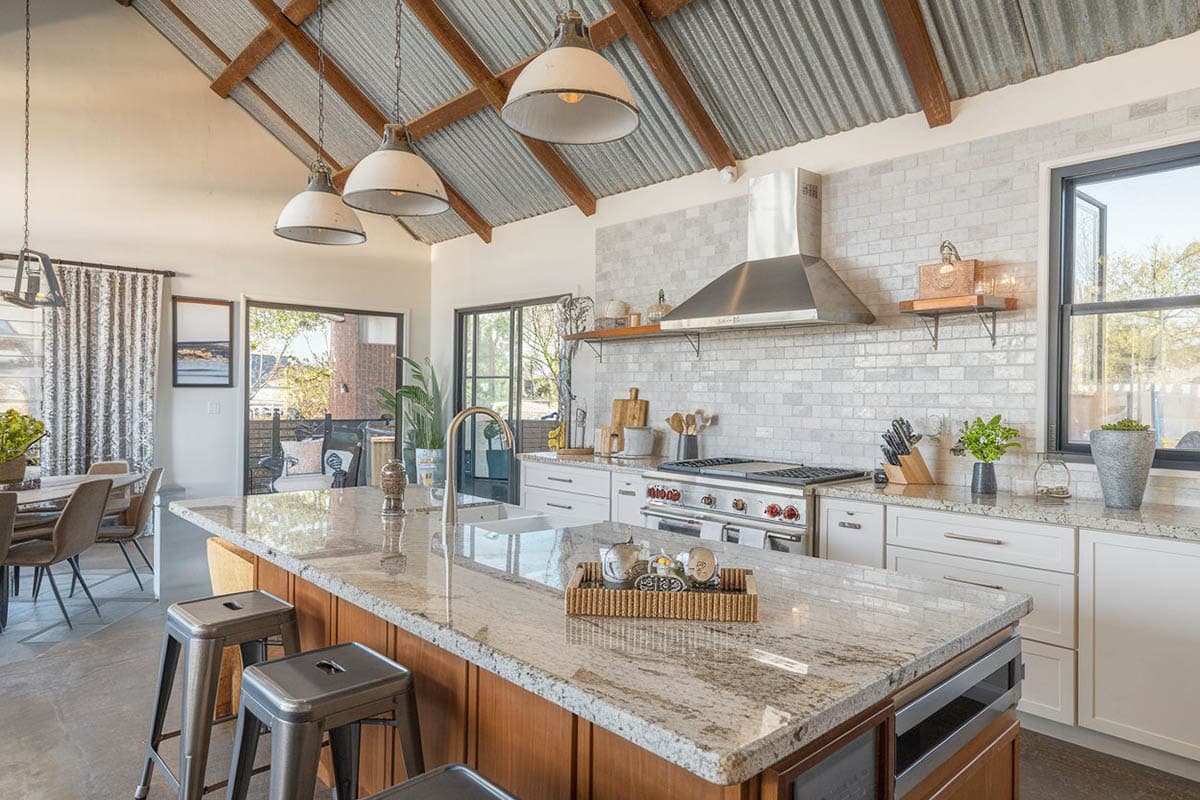
If you’re not a fan of classic styles and want to keep your motifs modern, you can use corrugated tin sheets on your ceiling to give it a touch of industrial aesthetic. These reclaimed corrugated metal panels are perfect for vaulted ceilings, as they help further emphasize the room’s height. In this example, the angled part of the kitchen’s ceiling was clad with GI corrugated metal sheets. To add more visual interest attach multi-colored LED cove lights to brighten the space.
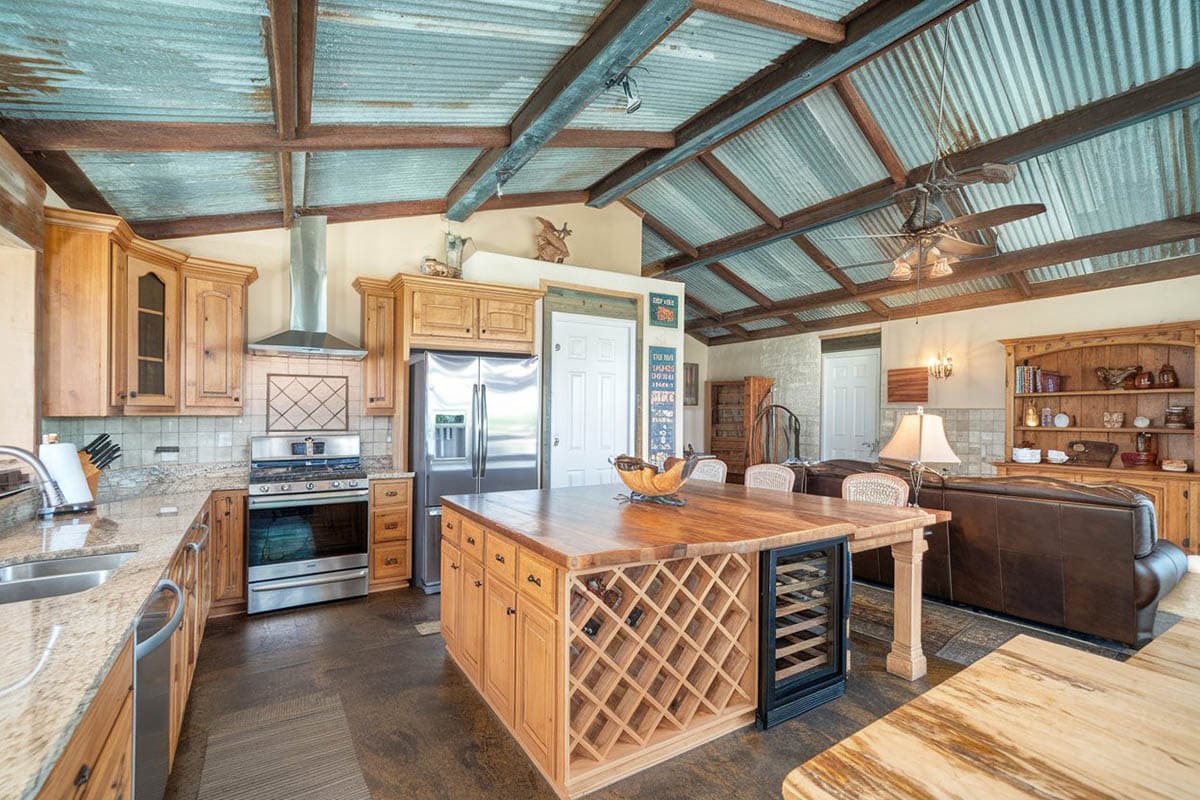
The combination of natural wood finishes and steel corrugated sheets runs this farmhouse-style open plan area into a chic rustic-industrial space. Raw steel finishes and warm wood finishes are hit combinations that rarely go wrong. See more kitchens with corrugated metal here.
Rustic Tin
Patinated tin is speckled pewter, verdigris hints, or even lightly rusted edges and adds instant character to a lodge or mountain-chic kitchen. Salvage yards are treasure troves; mix and match odd panels, but lay them out on the floor first to balance color variation before installation. Because rustic tin absorbs, rather than amplifies, light, layer in plenty of warm task lighting: filament pendants over the island, LED strips under cabinets, and a dimmable chandelier over the breakfast nook. Complement the ceiling’s time-worn feel with rough-hewn butcher-block countertops, hammered-copper sinks, and matte-black plumbing for a tactile, cohesive scheme.
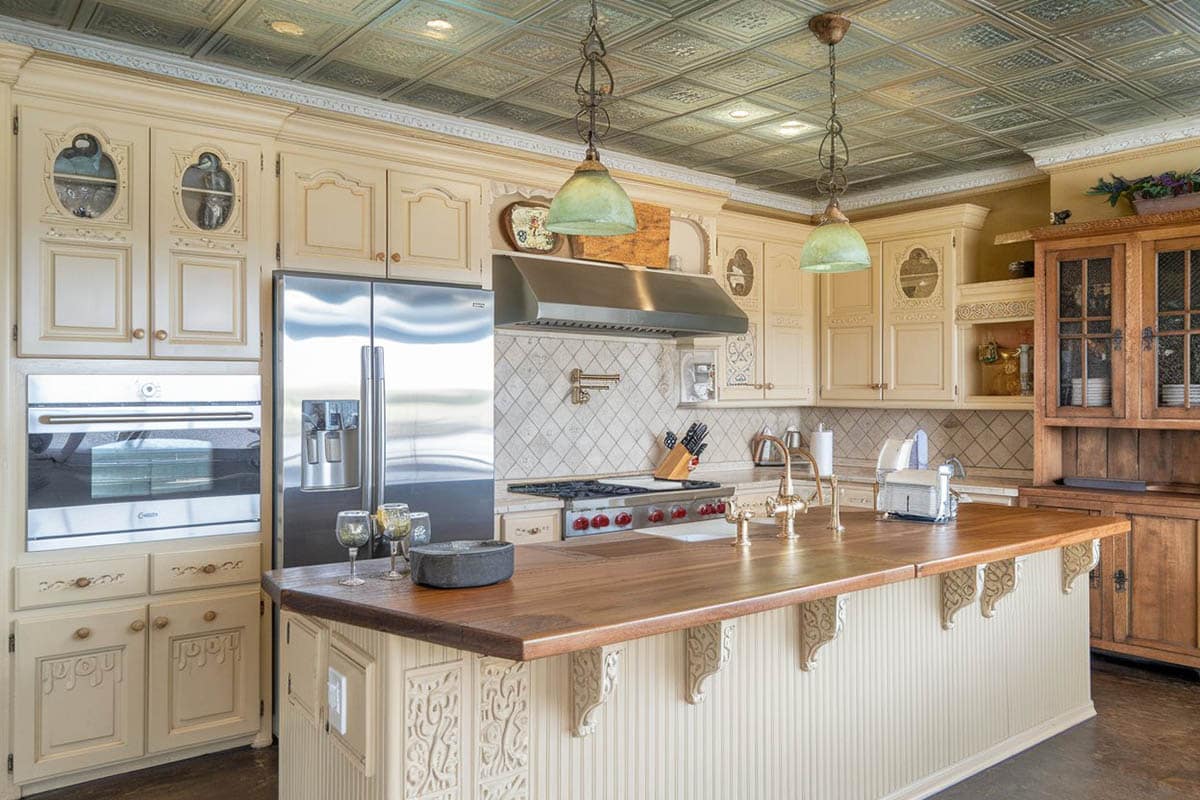
The combination of classic-style kitchen cabinets, classic motifs, blown glass lamps, and the dark-tin ceiling – this whole combination of colors, textures, and finishes – gives this small layout an authentic old-world feel. The beadboard kitchen island is topped with mottled brown granite countertops, which match elements such as the wood cabinets and tile backsplash.
Copper Tin
Pressed copper tiles, whether pre-oxidized with a green finish or freshly lacquered in gleaming penny hues can deliver warmth and a subtle luxury. Use them to echo copper cookware hung on a pot rack or hammered-copper pendants above the island for a curated, intentional look. Seal new copper with a heat-resistant clear coat if you want to lock in the shine; otherwise, let it age naturally to a mellow brown that pairs beautifully with soapstone counters and sage cabinetry. When you specify under-cabinet lighting, opt for fixtures with a high-CRI (90+) warm-white LED so the copper ceiling glows rather than skews orange, and pick cabinet hardware in aged-brass or antique-bronze so metals mix rather than clash.
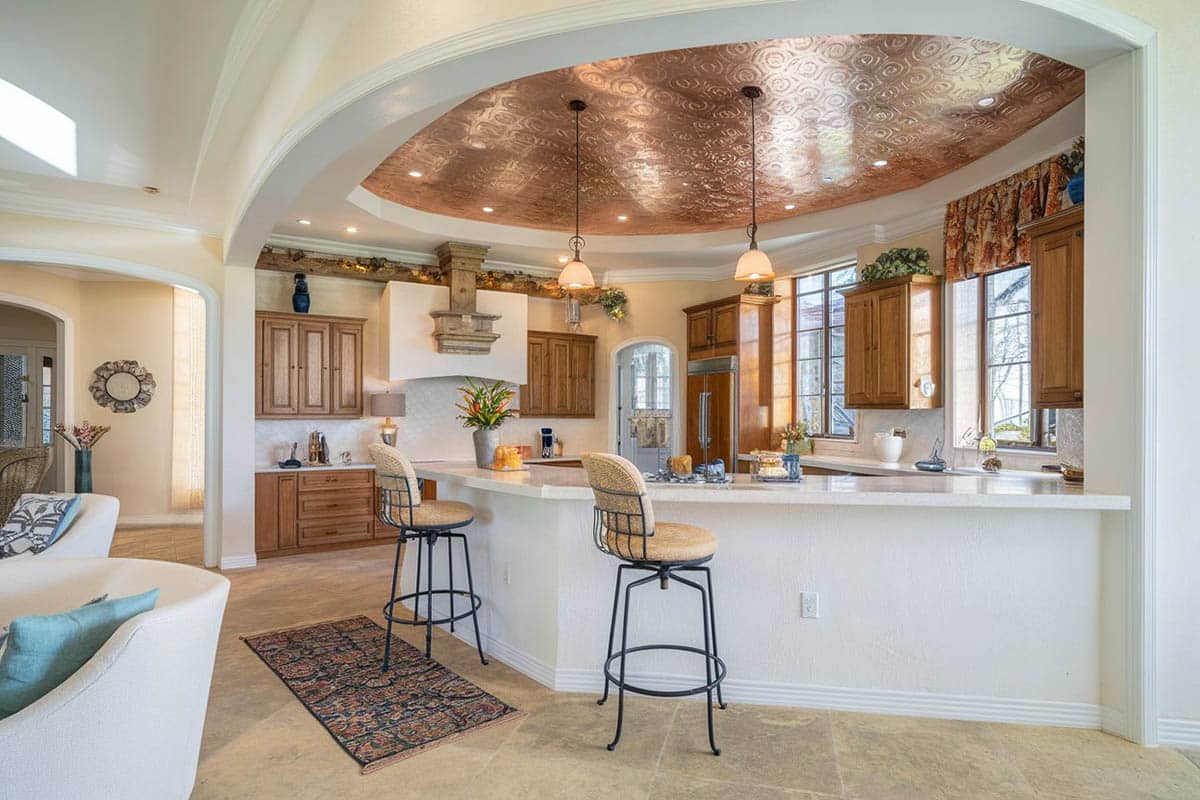
Copper tin ceilings, especially in matte finish, add a more antiqued vibe to any space. For this small kitchen area, the copper panels help the whole area stand out from the rest of the spaces in the open-plan house. You can also use copper ceilings in contemporary kitchen styles.


